Illuminated Ancient Manuscripts Reflect 1,000 Years Of Human History
A. Sutherland - AncientPages.com - Before the introduction of printing to Western Europe during the mid-15th century, all ancient books or manuscripts were written by hand.
Preparing a manuscript was not only a slow and expensive process but also demanding and hard work of a scribe.
 This ancient, beautifully illuminated manuscript is a codex of the four gospels (Tetraevangelion), made in Constantinople in the 12th century and was first listed by Spyridon Lambrou in his opus “Catalogue of the Greek Manuscripts on Mount Athos.”
This ancient, beautifully illuminated manuscript is a codex of the four gospels (Tetraevangelion), made in Constantinople in the 12th century and was first listed by Spyridon Lambrou in his opus “Catalogue of the Greek Manuscripts on Mount Athos.”
Some of the ancient, most luxurious manuscripts were illuminated by their masters, with sophisticated adornments like for example, pictures in brightly-colored pigments and burnished gold leaf and colorful graphic designs using silver and gold.
Illuminated manuscripts contain most of the finest surviving examples of medieval painting and the art of illumination flourished in the early centuries of Christianity when the manuscript codex, or book, gradually replaced the papyrus roll.
 Ethiopic illuminated Garima Gospels manuscript - Two pages with illuminated Eusebian Canons from Garima 1, likely the later of the two Garima Gospels - http://www.ethiopianheritagefund.org - Public Domain
Ethiopic illuminated Garima Gospels manuscript - Two pages with illuminated Eusebian Canons from Garima 1, likely the later of the two Garima Gospels - http://www.ethiopianheritagefund.org - Public Domain
By the end of the medieval era, as Europe became wealthier and more worldly, a great variety of texts, both religious and secular, came to be illuminated a variety of illuminated works are among the most astounding and intriguing objects ever created.
These great historical masterpieces reflect almost 1,000 years of human history, from around 600 to 1600. The origins of Western European illumination was the Christian British Isles, and the British Library's collection is one of the finest in the world.
Insular Manuscripts - (7th to 9th century)
'Book of Mulling' Irish pocket Gospel Book - source
These manuscripts were produced under Irish influence and Celtic culture, and developed the late antique practice of enlarging the first letter or initial at the beginning of a text into an entire page —known as a carpet page— which was covered with abstract designs.
Examples of insular manuscripts are Gospel Books and Psalters - the most significant biblical texts for Christian thought and prayer and at the same time, one of the most popular types of illuminated manuscripts in the Middle Ages.
Of all illuminated Insular manuscripts decorated by highly skilled artists, many biblical manuscripts survived and the tradition of using elaborately and beautifully decorated text pages in books of Gospels and other liturgical manuscripts flourished into the Ottonian and Romanesque periods.
Byzantine manuscripts - (6th to 15th century)
 A 12th-century Byzantine illuminated New Testament to the Holy Monastery of Dionysiou on Mount Athos in Greece.
A 12th-century Byzantine illuminated New Testament to the Holy Monastery of Dionysiou on Mount Athos in Greece.
In the Byzantine Empire, another tradition of manuscript illumination emerged from the 6th to 15th century. The illuminated manuscript played an important role in the development and spread of Byzantine art.
The most influential and significant characteristics of Byzantine manuscript painting were the abundant use of precious metals, especially gold; the choice of bright colors; the use of empty space, often filled with gold leaf background and a number of different styles to depict the human figure in Byzantine art over the centuries.
Byzantine illumination was frequently devoted to narrating biblical stories.
Carolingian Manuscripts - (8th to 9th century)
Charlemagne (or Charles the Great) King of the Franks and later Holy Roman Emperor, who reigned 800 - 814 encouraged artists, Carolingian illuminators to emulate the naturalism of the ancient Greeks and Romans.
Carolingian art survives in manuscripts, sculpture, architecture and other religious artifacts produced during the period 780-900. These artists worked exclusively for the emperor, members of his court, and the bishops and abbots associated with the court. Geographically, the revival extended through present-day France, Switzerland, Germany and Austria.
 The Ebbo Gospels (c. 816-35). The author portrait of St. Mark is characteristic of Carolingian art and the Carolingian Renaissance. The artist used distinctive frenzied lines to create the illusion of the evangelist's body shape and position. The footstool sits at an awkward unrealistic angle, but the body seems to depicted as a three-dimensional object in space. The right leg is tucked under the chair and the artist tries to show his viewer, through the use of curved lines and shading, that the leg has form. There is shading and consistency of perspective. The evangelist sitting on the chair strikes a believable pose.
The Ebbo Gospels (c. 816-35). The author portrait of St. Mark is characteristic of Carolingian art and the Carolingian Renaissance. The artist used distinctive frenzied lines to create the illusion of the evangelist's body shape and position. The footstool sits at an awkward unrealistic angle, but the body seems to depicted as a three-dimensional object in space. The right leg is tucked under the chair and the artist tries to show his viewer, through the use of curved lines and shading, that the leg has form. There is shading and consistency of perspective. The evangelist sitting on the chair strikes a believable pose.
Carolingian manuscripts are presumed to have been produced largely or entirely by clerics in a few workshops around the Carolingian Empire during the reign of Charlemagne covered most of Western Europe, as the Roman Empire once had.
Each of these workshops practiced its own style and even Charlemagne had his own center or scriptorium for copying and illuminating manuscripts, at Aachen, Germany. Under the direction of Alcuin of York, this scriptorium produced a new script known as Carolingian miniscule (writing) that spread from Aachen and was universally adopted, allowing for clearer written communication within Charlemagne's empire.
Carolingian miniscule was the most widely used script in Europe for about 400 years.
Ottonian Manuscripts - (10th to 11th century)
In the mid-10th century, a line of German kings including Otto I, Otto II, and Otto III began to commission manuscripts that, as in the Carolingian tradition, were to be a visual manifestation of imperial power.
The Ottonians were influenced by Byzantine art, using a narrative style that expresses the gravity and simplicity of Byzantine icons.
 Ottonian Manuscripts - (10th to 11th century)
Ottonian Manuscripts - (10th to 11th century)
The volumes of the figures and the spatial relationships are reduced to luminously colored patterns. The figures have large, expressive eyes and long, gesturing hands—motifs that are also derived from Byzantine art.
Ottonian art - particularly manuscript illumination, metalwork and ivory carving, and most surviving Ottonian illuminated manuscripts were created for a sacred purpose; manuscripts were most often produced of religious texts, and usually included a dedication portrait commemorating the book’s creation. The royal or religious donor is usually shown presenting the book to the saint of his or her choice.
The Ottonians held mathematical sciences in high regard and this is reflected in many of their artistic works. The intense intellectual, cultural and religious climate inspired artistic masterpieces produced by Ottonian “scriptoria” or monastery painting and writing schools.
Romanesque Manuscripts - (11th to 12th century)
Romanesque art was international in character, borrowing from both Insular and Byzantine art. It was created in Western Europe in approximately 1000 AD.
The Insular focus on initials became the central element in Romanesque illumination, and the historiated initial, which contains an illustrative scene, was derived from the Byzantine interest in narrative.
 Romanesque Manuscripts - (11th to 12th century)
Romanesque Manuscripts - (11th to 12th century)
The great examples of Romanesque manuscript illuminations with very popular decorations, striking colors and patterned backgrounds along with abstract drapery were used in the Bible or other religious texts.
Each book could be prefaced by a large historiated initial, also major initials were similarly illuminated as well. The Bibles often had a very large page size.
The Stavelot Bible, written over four years at Stavelot in what is now Belgium in the late eleventh century.
Several great examples of Romanesque manuscripts. One of them is for example, the outstanding early manuscript from its scriptorium, the Stavelot Bible, of about 1094 - 97, which is the work of many artists.
Gothic Manuscripts - (13th to 15th century)
By the end of the 12th century, Parisian artisans had developed a new style of illumination characterized by sinuous figures, vivid narratives, and the lavish use of gold leaf. During the 13th century the English and German schools developed Gothic styles as well.
 The ‘Douce Apocalypse’ (Bodelian Library)
The ‘Douce Apocalypse’ (Bodelian Library)
In England the art of illumination flourished widely in the second half of the 13th century. It was a time, in which the connections with the continent, particularly France, were strong.
Artists left the monastic scriptorium and moved into professional workshops in the city's centers. Many wonderful works - based on different styles and techniques of illumination - were created in this period of time.
Written by – A. Sutherland - AncientPages.com Senior Staff Writer
Copyright © AncientPages.com. All rights reserved. This material may not be published, broadcast, rewritten or redistributed in whole or part without the express written permission of AncientPages.com.
Expand for referencesMore From Ancient Pages
-
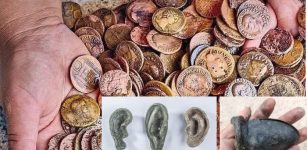 Extraordinary Etruscan And Roman Treasure Trove Unearthed In San Casciano dei Bagni, Italy
Archaeology | Aug 12, 2022
Extraordinary Etruscan And Roman Treasure Trove Unearthed In San Casciano dei Bagni, Italy
Archaeology | Aug 12, 2022 -
 More Than 27,000 Artifacts Illegally Collected By ‘Expert In Archaeology’ – Seized In France
Artifacts | Dec 18, 2020
More Than 27,000 Artifacts Illegally Collected By ‘Expert In Archaeology’ – Seized In France
Artifacts | Dec 18, 2020 -
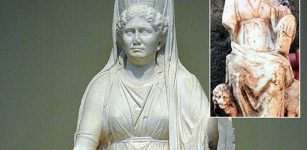 Marble 2th Century AD Statuette Of Goddess Cybele Unearthed In Bulgaria’s Plovdiv
Archaeology | Nov 5, 2019
Marble 2th Century AD Statuette Of Goddess Cybele Unearthed In Bulgaria’s Plovdiv
Archaeology | Nov 5, 2019 -
 Why Didn’t Pythagoras And His Followers Eat Beans?
Ancient History Facts | Jan 18, 2019
Why Didn’t Pythagoras And His Followers Eat Beans?
Ancient History Facts | Jan 18, 2019 -
 Young Boy Finds Baffling Artifacts In New Mexico Predating The Anasazi, The ‘Ancient Ones’
Featured Stories | Aug 6, 2024
Young Boy Finds Baffling Artifacts In New Mexico Predating The Anasazi, The ‘Ancient Ones’
Featured Stories | Aug 6, 2024 -
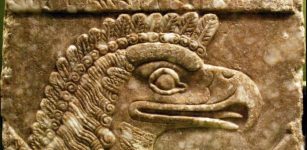 Adapa – Why Did The Wise Apkallu Refuse The Gift Of Immortality?
Featured Stories | May 9, 2019
Adapa – Why Did The Wise Apkallu Refuse The Gift Of Immortality?
Featured Stories | May 9, 2019 -
 Medusa – Cursed By Athena And Killed By Perseus
Featured Stories | Jul 30, 2018
Medusa – Cursed By Athena And Killed By Perseus
Featured Stories | Jul 30, 2018 -
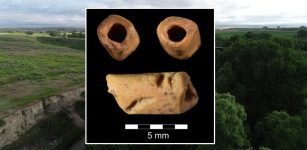 Oldest Bead In America Discovered At La Prele Mammoth Site, Wyoming
Archaeology | Feb 13, 2024
Oldest Bead In America Discovered At La Prele Mammoth Site, Wyoming
Archaeology | Feb 13, 2024 -
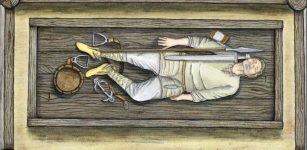 Magnificent Chamber Graves Of Four Scandinavian Warriors Discovered In Poland – The Piast Dynasty In New Light
Archaeology | Jan 22, 2020
Magnificent Chamber Graves Of Four Scandinavian Warriors Discovered In Poland – The Piast Dynasty In New Light
Archaeology | Jan 22, 2020 -
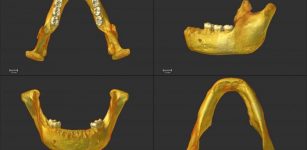 Settlement Of Europe: Result Of Several Migration Waves By A Single Population – Study
Archaeology | Jul 17, 2020
Settlement Of Europe: Result Of Several Migration Waves By A Single Population – Study
Archaeology | Jul 17, 2020 -
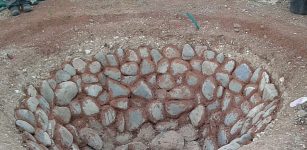 Prastio-Mesorotsos Excavations: Neolithic oven prepared food for 200 guests
News | Aug 30, 2015
Prastio-Mesorotsos Excavations: Neolithic oven prepared food for 200 guests
News | Aug 30, 2015 -
 World’s Oldest And Largest Maya Structure Revealed By LIDAR
Archaeology | Jun 9, 2020
World’s Oldest And Largest Maya Structure Revealed By LIDAR
Archaeology | Jun 9, 2020 -
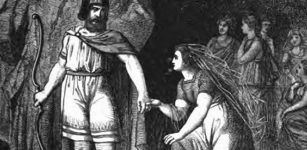 Freya And Her Lovely Husband Odr, God Of Summer Sun And Passion In Norse Mythology
Featured Stories | Dec 3, 2018
Freya And Her Lovely Husband Odr, God Of Summer Sun And Passion In Norse Mythology
Featured Stories | Dec 3, 2018 -
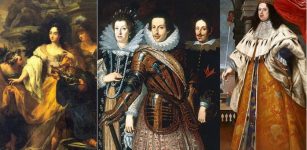 Medici Family – Powerful Renaissance Godfathers And Patrons Of Galileo Galilei
Featured Stories | Dec 17, 2018
Medici Family – Powerful Renaissance Godfathers And Patrons Of Galileo Galilei
Featured Stories | Dec 17, 2018 -
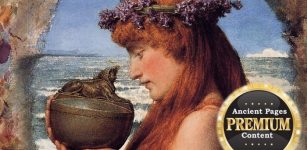 The Opening Of Pandora’s Box May Have Been A Real Event
Myths & Legends | Jun 22, 2021
The Opening Of Pandora’s Box May Have Been A Real Event
Myths & Legends | Jun 22, 2021 -
 Major Discovery Reveals Neanderthals In Italy Engaged In Plant Food Processing
Evolution | Jun 29, 2023
Major Discovery Reveals Neanderthals In Italy Engaged In Plant Food Processing
Evolution | Jun 29, 2023 -
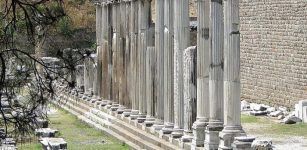 Greek God Asclepius And Ancient Healing Center ‘Asclepion Of Pergamum’
Civilizations | Nov 29, 2014
Greek God Asclepius And Ancient Healing Center ‘Asclepion Of Pergamum’
Civilizations | Nov 29, 2014 -
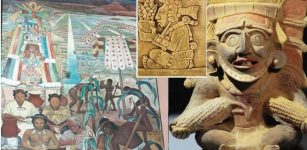 Yum Kaax, Mayan God Of Agriculture, Lord Of Woods And Caretaker Of Animals
Featured Stories | Jul 15, 2020
Yum Kaax, Mayan God Of Agriculture, Lord Of Woods And Caretaker Of Animals
Featured Stories | Jul 15, 2020 -
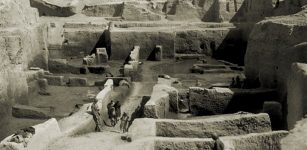 Iraq’s Ancient Kish City Survived The Great Flood – Today It’s Neglected And Lies Buried In Sand
Civilizations | Sep 24, 2015
Iraq’s Ancient Kish City Survived The Great Flood – Today It’s Neglected And Lies Buried In Sand
Civilizations | Sep 24, 2015 -
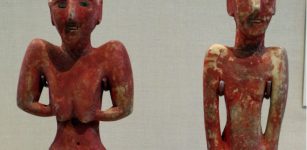 Male-Female Roles 7,000 Years Ago Were Less Traditional Than Previously Thought – New Study Reveals
Archaeology | Jun 30, 2022
Male-Female Roles 7,000 Years Ago Were Less Traditional Than Previously Thought – New Study Reveals
Archaeology | Jun 30, 2022


